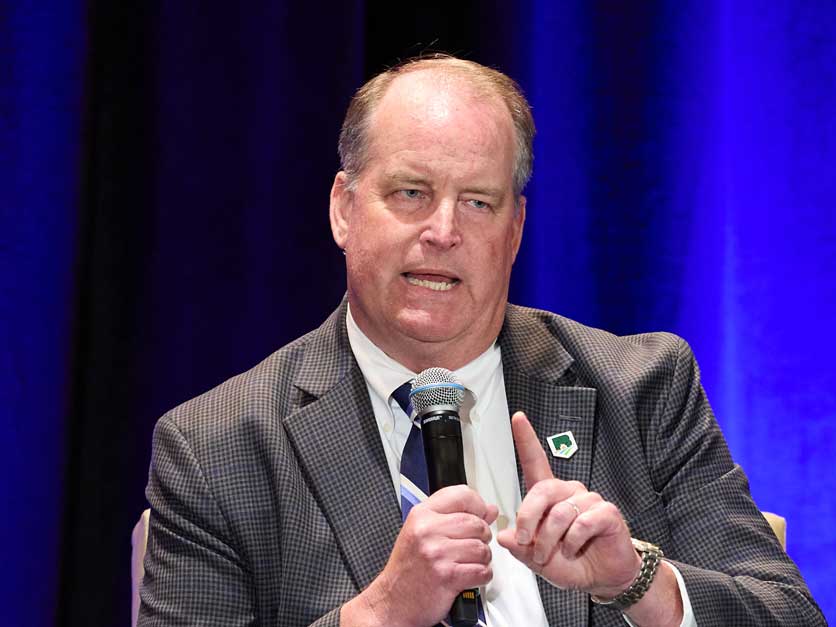The pandemic, shipping disruptions and many other challenges have exposed vulnerabilities in California’s local food supply chains. After years of crisis response, agricultural groups were excited to see USDA invest $820 million last month to address those vulnerabilities and build resilience for the next crises to come.
The funding will establish a dozen regional food business centers to provide feedback and technical assistance to strengthen local and regional food systems, including a RFBC at the University of California. Another $420 million will support a new Resilient Food Systems Infrastructure (RFSI) Program to expand capacity and food processing, with a focus on specialty crops to complement existing meat and poultry processing grants.
“Farmers like myself were hurt and some farms devastated by [COVID-19 closures]. Even to this day, we see some members haven't fully recovered,” said California Farm Bureau President Jamie Johansson, in testimony to the State Board of Food and Agriculture last week. “Opportunities for maintaining—or even growing—production can only be realized if processing and transportation capacities are equally supported.”
He described the challenge of egg producers pivoting to meet a sharp demand spike at the onset of the pandemic—which was “no small feat.” Labeling laws and packaging standards needed overhauls. Small olive oil producers like Johansson often struggle to pivot so quickly and face intense pressure to diversify their product lines just to stay competitive.
 California Farm Bureau President Jamie Johansson
California Farm Bureau President Jamie JohanssonPolicy discussions over identifying the needs for essential services like agriculture existed long before the pandemic and were born out of crises like 9/11 and planning for post-Katrina natural disasters, he explained.
California Rice Commission CEO Tim Johnson added that more can be learned from the recent drought on dealing with supply chain infrastructure issues. Last year rice growers harvested the smallest crop since 1958—a $13 billion impact on the local economy. While farmers could lean on crop insurance, no program covers the support businesses that provide the necessary infrastructure for processing the rice. Drying facilities shut down and laid off workers, while hauling trucks went idle.
“There really does need to be some type of a safety net and it needs to trigger as quickly as crop insurance for farmers,” said Johnson.
Don’t miss a beat! It’s easy to sign up for a FREE month of Agri-Pulse news! For the latest on what’s happening in Washington, D.C. and around the country in agriculture, just click here.
Farmers continue to face numerous problems—from a limited labor supply to consolidation, inflation and high input costs. Johansson added that challenges like shipping delays spread beyond food production to impact processors, wholesalers and retailers and can be exacerbated by issues in other industries, such as a widening workforce gap in trucking. He believed RFSI will play a critical role in addressing shortfalls, from picking and packaging to end-of-the-line sales.
“This is about adding an appropriate level of redundancy into our system,” said CDFA Secretary Karen Ross, “so that we're capable of being resilient, of being able to make the pivot.”
She warned Southern California farmers could experience the next crisis, as lower Colorado River basin states negotiate a long-term drought plan to extend beyond 2026. Imperial County, she noted, is “extremely dependent on one industry.” CDFA is working closely with a coalition of agriculture and economic development interests to consider future workforce needs in the Central Valley, an effort known as the Fresno-Merced Future of Food (F3) Initiative. Ross hopes to expand the F3 effort to add more value and economic opportunities in the Imperial Valley.
“This is a chance to think very holistically about the system,” she said. “Agriculture—the process every year of planting and harvesting and doing it over and over again—is a renewable resource and does create those opportunities.”
She cautioned the grant is “not the answer to everything” but is an important step in the right direction.
Joy Sterling, a board member and CEO of Iron Horse Vineyards, felt strongly that a USDA-recognized definition of a food hub would be “extremely helpful” in supporting diversity and resilience in local supply chains.
Johansson noted that the issues can extend beyond disasters to emerging state policies, which can conflict with efforts to build food system resilience. He referred to regulations from the Air Resources Board to convert all trucks to zero-emissions.
“There are things down the road that we can see that are going to be extreme challenges,” he said. “And it will be a bigger challenge for the smaller—rather than medium sized—[producers].”
For more news, go to Agri-Pulse.com.


